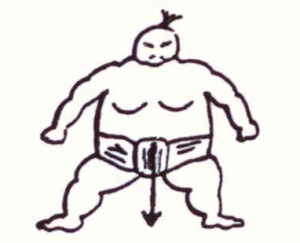Forces in Static Situations: Difference between revisions
From OER in Education
JanetBlair (talk | contribs) No edit summary |
No edit summary |
||
| Line 7: | Line 7: | ||
|tagline=What are forces, how do you describe them and just where do they act? | |tagline=What are forces, how do you describe them and just where do they act? | ||
|topic= forces | |topic= forces | ||
|subject= science | |subject= science | ||
|resourcenumber= SC0041 | |resourcenumber= SC0041 | ||
|age= Primary | |age= Primary | ||
Latest revision as of 14:26, 2 February 2015
What are forces, how do you describe them and just where do they act?
Lesson idea. A simple explanation of the nature of forces with useful ways of defining and exploring the size and direction of acting forces.
Teaching approach. This resource is part of a set of 7 ORBIT resources and can be used in different ways:
- As a ‘dip in’ resource for teachers needing ideas about exploring forces.
- As the foundation for a larger topic involving all of the activities as the inspiration for a large body of work on the exploits of Nelly the Elephant. There are clear links to literacy (Nelly’s story), numeracy (weighing and measuring), music (the song – how can it represent her journey in sound), art representations of elephants, designs based on India elephants in traditional tack), geography (the origins of elephants), history (Hannibal and historical uses of elephants).
- At Foundation Stage children would be exploring forces in terms of pushes and pulls on various objects and are unlikely to be recording their results. At KS1 and KS2 children may be exploring forces by considering the idea of size and direction of force as well as the concept of balanced/equal or unbalanced/unequal forces. After a brief discussion(ta) about what the children know already about forces an interesting activity is to ask them to see what in the classroom they can move by pushing. Discuss their findings and ask about the size of force they were using on the objects and in which direction the force was acting. Use some pupils to demonstrate their actions. Then discuss the concept that there are forces acting in the other direction as well. If the object moves then the pushing force of the child is larger than the force acting in the other direction. Ask the children to try moving the wall by pushing. Then discuss the idea that the force of the wall holding together and staying still is equal to the force they are using to try to move it - otherwise there would be movement either of the wall or of the children backwards. A good way to demonstrate this difficult concept is to push a bulldog clip against a wall, using the wall to push one of the levers on the clip. Following this practical activity the children might pick one or two situations and use arrows to record the size and direction of forces in the drawn situation. (edit)
| Resource details | |
| Title | Forces in Static Situations |
| Topic | |
| Teaching approach | |
| Learning Objectives |
|
| Format / structure | |
| Subject | |
| Age of students / grade | |
| Table of contents | |
| Additional Resources/material needed | |
| Useful information | |
| Related ORBIT Wiki Resources | |
| Other (e.g. time frame) | |
| Files and resources to view and download |
|
| Acknowledgement | |
| License | |

